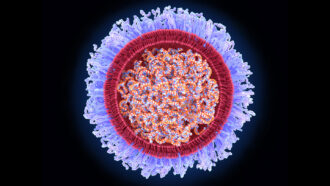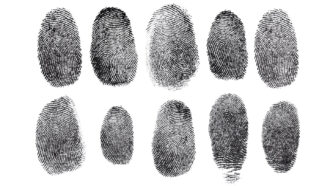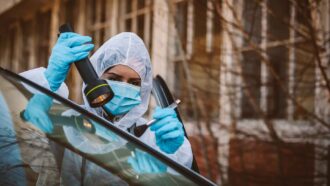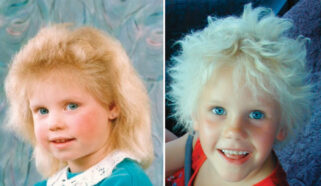Twins don’t share everything
Twins carry different flags on their DNA, even from birth

It’s often difficult to tell identical twins apart. They can sound alike and look alike. It’s particularly confusing when they wear the same clothes. But scientists have now identified one way in which these twins always differ.
In a new study, biologists investigated the genes of newborn twins. They found that it’s here that young siblings begin to go their separate ways. The newly identified differences aren’t actually in the babies’ genes but in molecules attached to those genes. Those attachments can exert a large influence on a person’s life.
Genes can be found in almost every cell of every living thing. They’re passed from parents to their children. They’re made of DNA, a molecule that looks like a twisted ladder. Genes contain the directions for how to make proteins, which keep a cell alive and doing its job. But genes aren’t everything.
Chemicals called epigenetic markers can be attached to those genes, like flags or balloons hanging off the sides of the DNA ladder. These don’t just change the look of the genes. Like pieces of tape stuck over a light switch, these markers can force a gene to remain turned on or off. The type of marker scientists studied in the twins generally sticks the switch in the off position so that some proteins don’t get made. And that means the proteins’ jobs won’t get done.
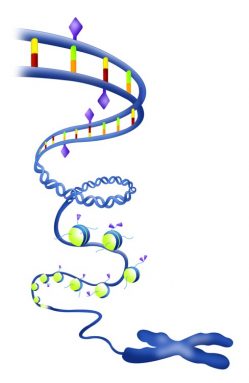
Every time a cell divides, new epigenetic markers may form. Foods, pollutants and stress may all contribute to the development of new markers. So throughout our lives we tend to accumulate more and more. But a few are there from the day we’re born.
Epigenetic differences may explain why identical twins don’t look exactly alike or why they have different personalities.
Previous studies have found epigenetic differences in identical twins. Scientists suspected, however, that those differences developed only after birth. But that’s not the case, reports Jeffrey Craig. A biologist at Murdoch Childrens Research Institute in Parkville, Australia, he led the new study.
His team found that newborn twins have markers attached to different genes from the very start. It’s true in identical twins, which come from the same embryo, or fertilized egg. It’s also true in fraternal twins, which come from different embryos. However, fraternal twins had more such differences than identical twins did.
Arturas Petronis studies epigenetics at the University of Toronto. He told Science News that he thinks identical twins have more similar epigenetic markers because they come from the same embryo.
Of course, the new study won’t help you tell the difference between those identically dressed twins in your class. You’ll just have to ask them which one is which.
Power Words
cell The smallest structural and functional unit of an organism, typically too small to see with human eyes.
DNA This abbreviation is short for deoxyribonucleic acid. It’s the material found in cells that controls the function of all cells and tissues in the body. Each molecule of DNA has two twisted thread-like strands that are linked together.
embryo A fertilized egg. In humans, the term usually describes the state in the first eight weeks following fertilization. This is before all the organs have developed.
epigenetics The science of studying the molecules that act on genes.
gene A segment of DNA — or genetic information — that holds instructions for making a protein. Offspring inherit genes from their parents. Genes influence how an organism looks and behaves.
molecule Two atoms or more (even thousands) that are physically bound to form a chemical. Two atoms of oxygen make a molecule of oxygen. Two hydrogen atoms bound to an oxygen atom make a molecule of water.



